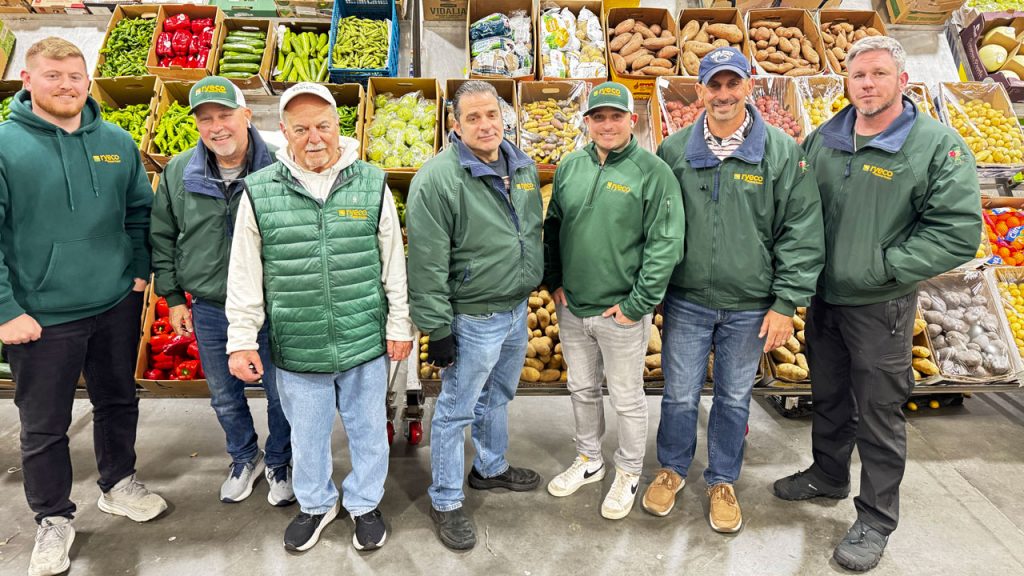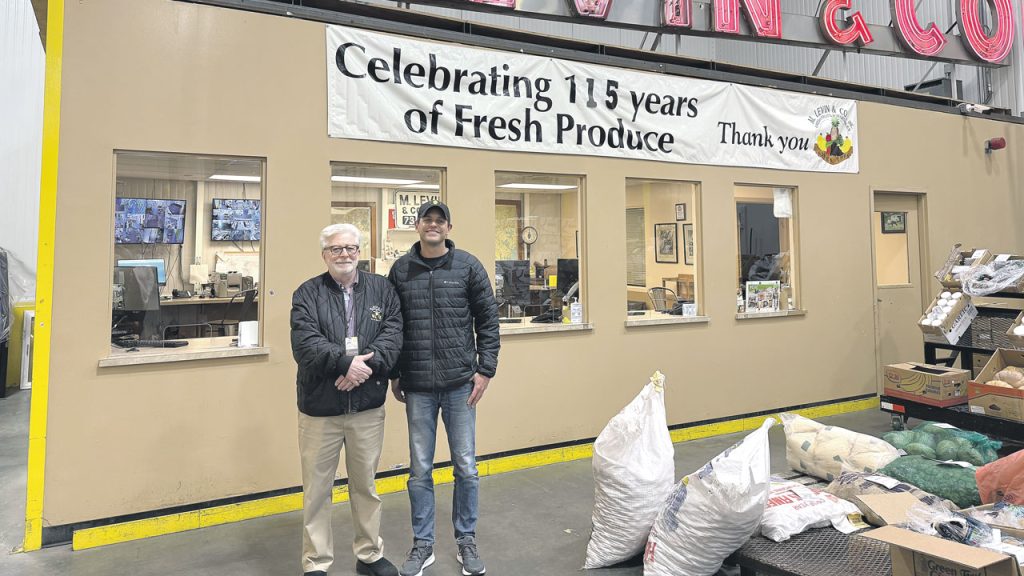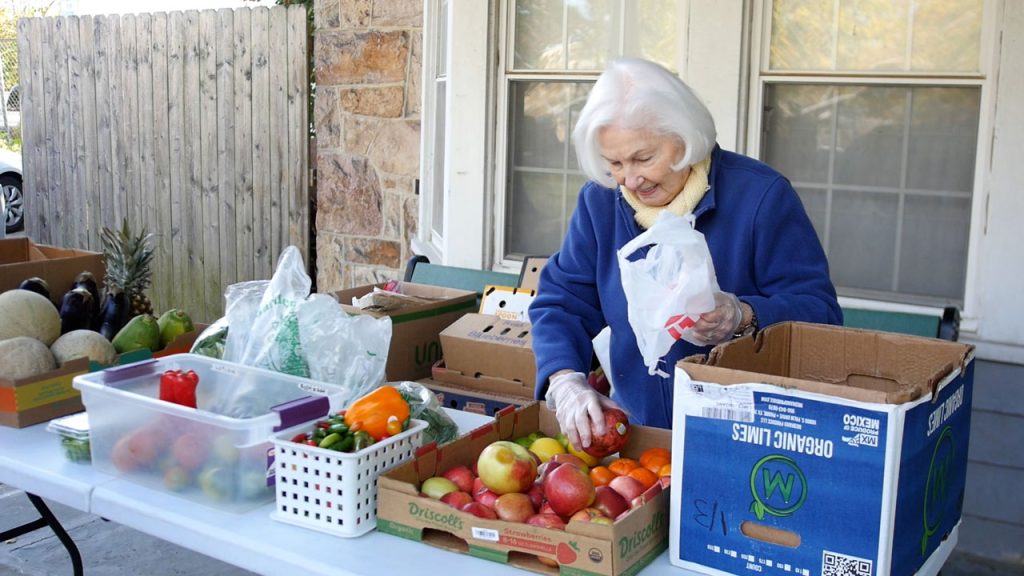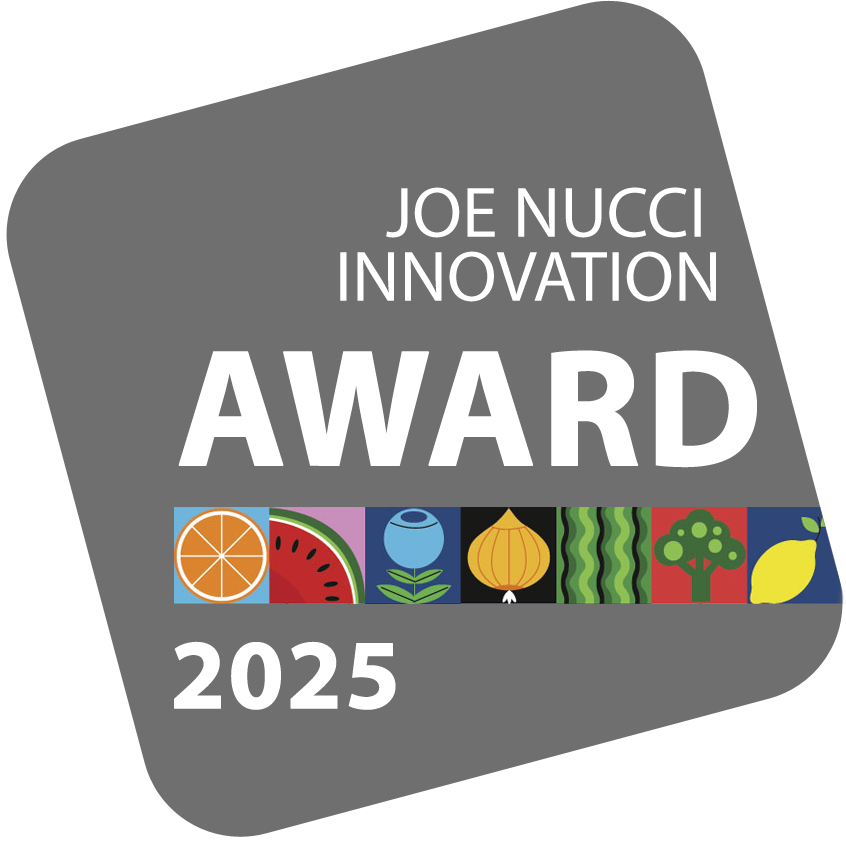Wholesalers Deliver by Understanding Consumers
September 15, 2025 | 12 min to read
In *Philadelphia*, produce suppliers emphasize quality and service to meet consumer demands through collaboration and adaptability. Leaders like Richard “RJ” Durante of Nardella and Tom Kovacevich of TMK Produce focus on understanding end-user preferences to stock trending items, while Phil Bartocci of Coosemans emphasizes sourcing unique products. The *Philadelphia Wholesale Produce Market* enhances efficiency by maintaining product quality and food safety, supporting local nonprofits like *Philabundance* and *Sharing Excess*, which provide fresh produce to underserved communities.

Philly produce suppliers carve a niche through quality and service.
To best serve their customers, Philadelphia’s regional produce suppliers ultimately look to the consumer.
“We recognize every pallet we deliver ultimately ends up on someone’s plate,” says Richard “RJ” Durante, co-owner of Nardella. “We take time to understand consumer preferences. In the end, it’s what the consumer wants that drives what we do and helps us help our retail and foodservice customers stock what sells.”
Knowing the customer’s end user is when it gets fun, according to Tom Kovacevich, president of TMK Produce. “For example, we often come across new items or packaging we know our customer’s end user will jump on, creating extra sales for everyone,” he says. “In these cases, knowing our customer’s customer gives us the confidence to bring in products outside the normal lineup, such as clamshell cherries, bagged apricots, clamshell candy grapes, and black diamond watermelons.”
From a business standpoint, it’s crucial to understand who the end consumer is. “Understanding the buyer and what type of organization they’re purchasing for helps us determine what items will be of interest for their businesses,” says Tracie Levin, controller at M. Levin and Company.
Various packages and programs at Procacci Brothers came out of listening to the buyer side, according to Rick Feighery, president. “We’re in the service business, and it’s all about listening to and servicing the customer.”
Understanding the end consumer allows wholesalers to anticipate demand and trends, says Phil Bartocci, general manager at Coosemans Philadelphia. “This, in turn, helps our customers stock the right items at the right time.”
“Whether it’s health-conscious shoppers, adventurous home cooks, or restaurant diners expecting a premium experience, knowing what drives their choices allows us to guide our customers toward selections that sell and satisfy.”
COLLABORATING FOR VARIETY
Following the product through consumption influences offering. “The business doesn’t end at the customer, it ends when the consumer buys,” says Rory Liberta, vice president of Wick & Brother. “Consumer demand affects what we carry.”
Philadelphia Wholesale Produce Market (PWPM) offers retailers and foodservice operators an enormous assortment of products. “We act as a super wholesale store with an estimated combined inventory turn of tens of thousands of pallets a week,” says Kovacevich. “That is our secret sauce to success.”
One of PWPM’s hallmarks is its belief that cooperation goes hand-in-hand with competition. “Our market is a classic example of the whole being greater than the sum of its parts,” says Mark Smith, general manager of the PWPM. “We respect each other, trade among ourselves, deliver each other’s products to shared customers, and live up to our motto that ‘fresh is our life’s work.’”
Collaboration ensures availability. “If we don’t have a product, we’ll find it from one of our other great partners here in the market,” says Todd Penza, salesman with Pinto Brothers. “This allows us to fill all requests with the best product we can.”
Though Ryeco carries pretty much everything, there are still items it doesn’t. “There are merchants on this market who specialize in some of those unique products,” says Filindo Colace, vice president of operations. “We have relationships with them so we can cover our customers’ orders.”
PWPM wholesalers use knowledge of consumer demand to add unique items to their mix. Coosemans works closely with foodservice operators to source unique, chef-driven items in pack sizes and freshness levels they need.
“Our team often works directly with chefs on seasonal planning or last-minute requests, which helps them stay creative and competitive,” says Bartocci. “We specialize in sourcing the rare and hard-to-find, from edible flowers and microgreens to baby vegetables, tropicals, and ethnic specialty. Offering something unexpected helps our customers stand out and keeps their own audiences engaged.”
Casey Spencer, senior marketing coordinator at John Vena Inc. (JVI), notes that specialty is JVI’s specialty. “We have long-standing relationships with vendors who specialize in importing unique items. Some of these varieties, such as lychee and dragon fruit, are becoming more mainstream as trends take off. However, some specialties still remain more niche, and we’re happy to source that piece for shoppers or diners.”
PWPM recently expanded overall offering by welcoming new tenant L.A. Fresh. “They joined us in May 2025,” says PWPM’s Smith. “They currently operate farms in California and Mexico and also occupy space in the Los Angeles market. They bring a different mix out of Mexico, giving us an even broader selection.”
QUALITY FOR CONSUMERS
PWPM excels in serving consumers through managing product quality and shelf life. “The biggest way we can help the end user is to ensure they get maximum shelf life,” says Colace. “We do this by minimizing time, ordering properly and protecting it — something we do very well in this building. The whole idea is to create a flow that maximizes the customer getting the best shelf life at the end.”
PWPM was designed to ensure produce quality is consistently held to the highest global standards, explains Smith. “The fact that the cold chain is kept intact from start to finish is an element many other wholesale produce markets can’t promise.”
It’s a real benefit to have temperature control where the product never really breaks the chain, agrees Penza. “We know our product meets buyer specs at any given point,” he says.
Food safety aspects of PWPM also benefit the end user. “Making sure we maintain health and traceability within the supply chain is equally important,” says JVI’s Spencer. “We take food safety seriously and are constantly adapting our processes to align with industry standards so we can continue to serve our customers in a safe and reliable manner.”
Ensuring quality and food safety on local product is another support. “We hold our local suppliers to high food safety standards,” says Colace. “We don’t cut corners on that. If we have a vendor that can’t give us the right documentation, then we don’t offer that product. In the end, we’re protecting our customer and their customer.”
CUSTOMIZING FOR CUSTOMERS
Philly wholesalers provide targeted sourcing options for customers. “We have flexibility by being in the middle of the supply chain,” says Wick’s Liberta. “We can supply volume for wholesalers or foodservice, or we can also serve those buying smaller amounts.”
The biggest advantage a customer gets from buying from a wholesale distributor over direct, according to Levin, is flexibility in purchasing. “If a customer orders too much product direct from a grower, they are stuck, whereas when purchasing from a wholesale distributor, they can cut back, or add, to their order,” she says. “The turnaround time is also much quicker. And, if an order comes in with subpar quality, a wholesaler can swap it out or return it.”
Nardella’s Durante says the wholesale market offers a multifaceted approach. “First, flexibility,” he says. “You don’t like the product or price, you can return it. Next, reliability. We ensure everything aligns perfectly — the truck arrives to us on time, product gets into cold storage, it’s sorted and picked correctly, and delivered on time. Finally, selection.”
PWPM wholesalers support customers through relationship. “We’re more than a distributor, we’re a produce partner,” says Bartocci. “We help our customers plan, pivot and innovate. Whether it’s sourcing a hard-to-find item with 24 hours’ notice, offering storage solutions, or helping a new restaurant develop its seasonal menu, we’re fully invested in their success.”
SHARING INFORMATION
PWPM wholesalers create value by sharing trends in the marketplace. “Being aware of what’s trending with consumers helps us better serve customers,” says Feighery. “For example, in summertime we always know once the beach towns start opening, everybody’s going to want to fresh oranges and juice for the Orange Crush.”
Durante says it’s important to stay relevant, responsive, and ready for the future. “A lot of people see us as just companies who move boxes,” he says. “But we don’t just do that, we consult with chefs on product, we provide late-night communication, we advise on start of seasons. We look at how we can align, and we use our knowledge of trends to navigate changes and have an open dialogue.”

Indispensable information aids customers in making the best decisions. “We offer customers a plethora of information about the items we sell,” says Levin. “Our team of produce experts keeps our customers up to date on in-season items, how to pick the best produce, growing and weather condition updates as it pertains to crops, as well as storage tips and tricks.”
SERVICING CUSTOMER NEEDS
PWPM merchants offer value-added services, including ripening, repacking, special packaging and sorting, providing customized services for clients. “Programs shouldn’t be a one-size-fits-all strategy,” says Dan Vena, JVI director of sales and marketing. “Our ripening and repacking programs allow us to meet the specific business needs of our customers so they may better serve their customers. We also offer a slew of other services, including logistics and product support, so we can truly be there for our customers every step of the way.”
Coosemans offers a range of value-added services, including local delivery, specialty sourcing, custom and specialty packaging, product information, and real-time availability updates. “These services allow our customers, whether retailers or chefs, to operate more efficiently and provide a better experience to their own customers,” says Bartocci.
M. Levin is known for its customized ripening programs for customers. “We tailor programs to the individual buying entity to ensure they have optimal fruit at the correct level of ripeness for their end user buyers,” says Levin. “Our ripening programs for our banana foodservice customers help them determine the correct quantity and color of bananas they need to accurately purchase for their programs.”
JVI offers value-added services specific for foodservice professionals. “Our in-house packing facility allows us to offer splits and portioned packs of many of our bulk products,” says Vena.
Freeing up time so clients can focus on their business is increasingly important, and delivery is playing a larger role in this. Ryeco has 30 trucks on the road every day, and forecasts an increase. “I expect to increase four to six trucks over the next six months to a year,” says Colace. “Many of our customers are realizing it’s more valuable for them to be in their facilities so they can have more control over what’s going on.”
Pinto Bros. offers delivery capabilities via its sister company, A. Penza Inc., including a fleet of refrigerated trucks.
EMPLOYING TECHNOLOGY
Philly merchants harness technology to benefit customers and consumers. One of JVI’s social media goals is to educate consumers about specialties. “Specialty products can be new to the average consumer, and it can be intimidating to some,” says Spencer. “Starting conversations about unique items gets the consumer more familiar and more willing to seek out variety on grocery store shelves or choose them off a menu.”
Companies also use technology to help buyers streamline the process. Recently, Ryeco kicked off a new phone app ordering program via Pepper. “We’re freeing customer time in ordering,” says Colace. “We also purchased Pepper’s AI technology. So when customers send us a spreadsheet, we can take a picture of it, and it’ll convert it into an order in our system. Our salesmen will have more time to work with customers, whether marketing or helping with on-site setup. That’s three or four hours a day now that can be used differently.”
Ryeco also employs technology via its warehouse management system. “All our warehouse employees pick orders and load them with computerized scanners,” says Colace. “We have absolute traceability of our products. We’re getting orders done and trucks on the road faster. It’s improved our efficiency by 20%.”
For one year, Ryeco has been using a technology tool to route its trucks. “By the end of this year, we expect all our trucks will have tablets, so we’ll be paperless,” says Colace.
• • •
In Philly, It’s Produce For All
Two successful programs providing produce to underserved communities.
Philadelphia is fortunate to have two major food nonprofit organizations serving the metro area, both of which have long relationships with the Philadelphia Wholesale Produce Market (PWPM).
Food bank Philabundance boasts deep roots in Philadelphia. “We started out in 1984 in the back of a Subaru with a vision of being able to help serve food,” says Kara Ferguson, food sourcing for Philabundance. “Forty years later, we’ve grown exponentially. We serve food desert communities where fresh produce is just not affordable, even for those who are working. We now serve a nine-county area in Pennsylvania and New Jersey.”

Sharing Excess was born in 2018 in Philadelphia when founder Evan Ehlers, while attending Drexel University, realized he had extra swipes left on his meal plan at the end of the semester. “He used these swipes to purchase food on campus, then drove around his community delivering them to anyone in need,” says Victoria Wilson, operations director for Sharing Excess. “In doing this, he uncovered a hard truth: There wasn’t a shortage of food, there was a shortage of access.”
These two innovative organizations connect underserved consumers with produce available in the industry while also furthering education and sustainability.
“We’re so gratified to be working with two organizations that help solve the maddening paradox of food waste and food insecurity,” says Mark Smith, PWPM general manager.
PHILABUNDANCE
In the past year, Philabundance distributed approximately 50 million pounds of food, including 13 million pounds of produce, to its 330 community partners. It operates three warehouses in South Philly, North Philly and Roxborough.
The organization connects with companies in the food industry that have excess or rejected product. “Philadelphia is a huge produce shipping region,” says Peter Groton, food industry coordinator for Philabundance’s food sourcing department. “Often rejected produce is actually good produce. Companies partner with us to donate it.”
Educating consumers is a unique aspect of the organization’s work. “We have a newsletter and nutritionist to highlight certain items through recipes or usage,” says Ferguson. “These may be unique or unfamiliar items for our clientele. For example, bok choy is something we get excited about when we get it, but people don’t know how to use it.”
Since everything is donated, Philabundance sometimes has to get creative with what is offered. “Our educational component allows us to say yes to unique offerings from suppliers,” says Groton. “If we can provide an awesome recipe or knowledge of what to do with spaghetti squash or rutabaga, then we can take it, and people will use it.”
SHARING THE EXCESS
Sharing Excess’s affiliation with PWPM began in 2021 when the organization approached the market to inquire about fresh produce donations. “We learned that many vendors had a consistent supply or unsold surplus, and we pitched a three-month pilot to build a solution capturing food donations on site,” says Wilson.
“Our now fully functioning on-site food rescue operation has captured over 25 million pounds of fresh produce and distributed it to more than 400 hunger relief organizations throughout Philadelphia.”
The organization established an on-site team to sort and glean through food donations five days a week, operating out of one of PWPM’s bays. It has helped cut PWPM’s overall waste by more than 50%.
17 of 23 article in Produce Business September 2025

